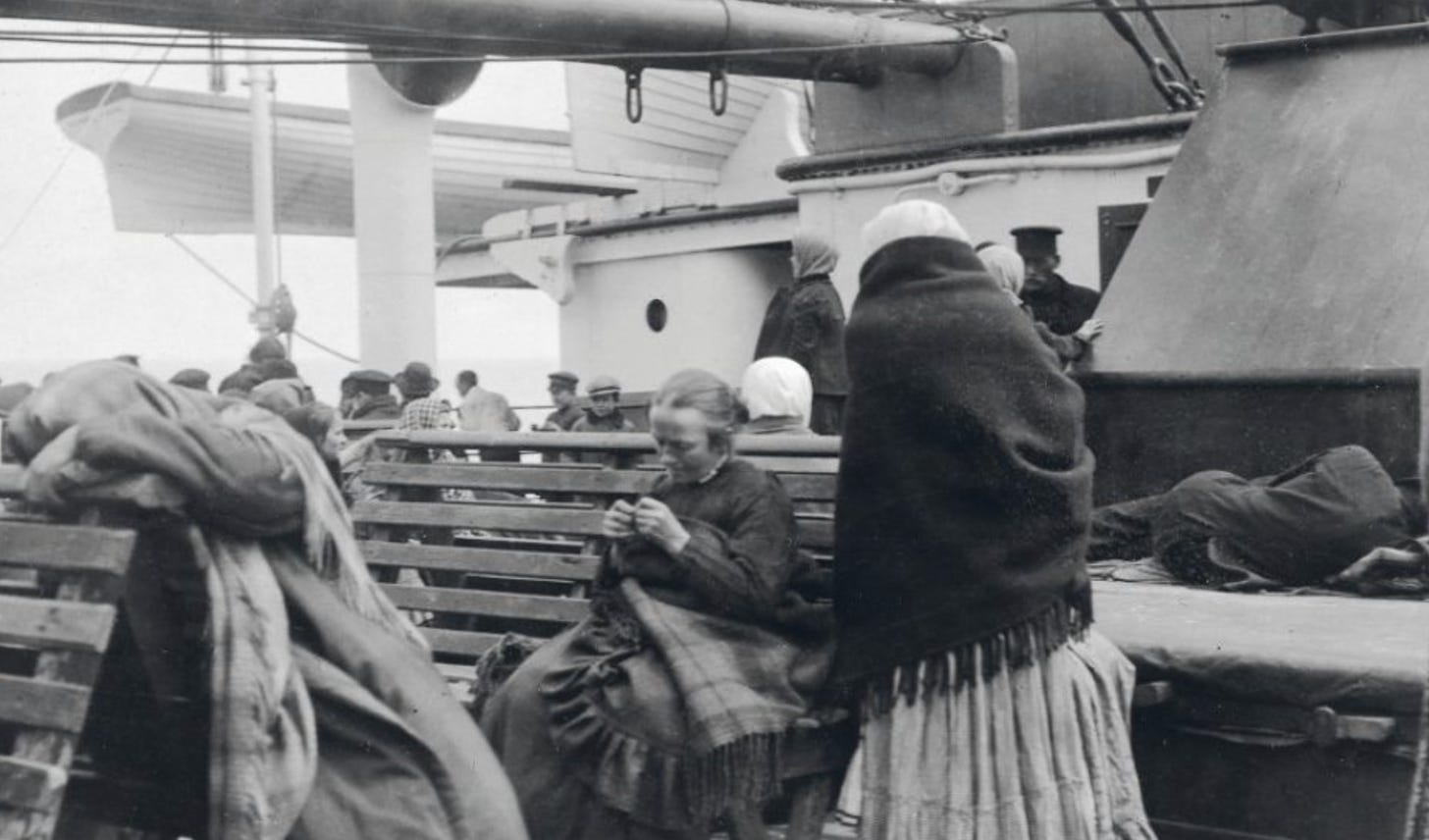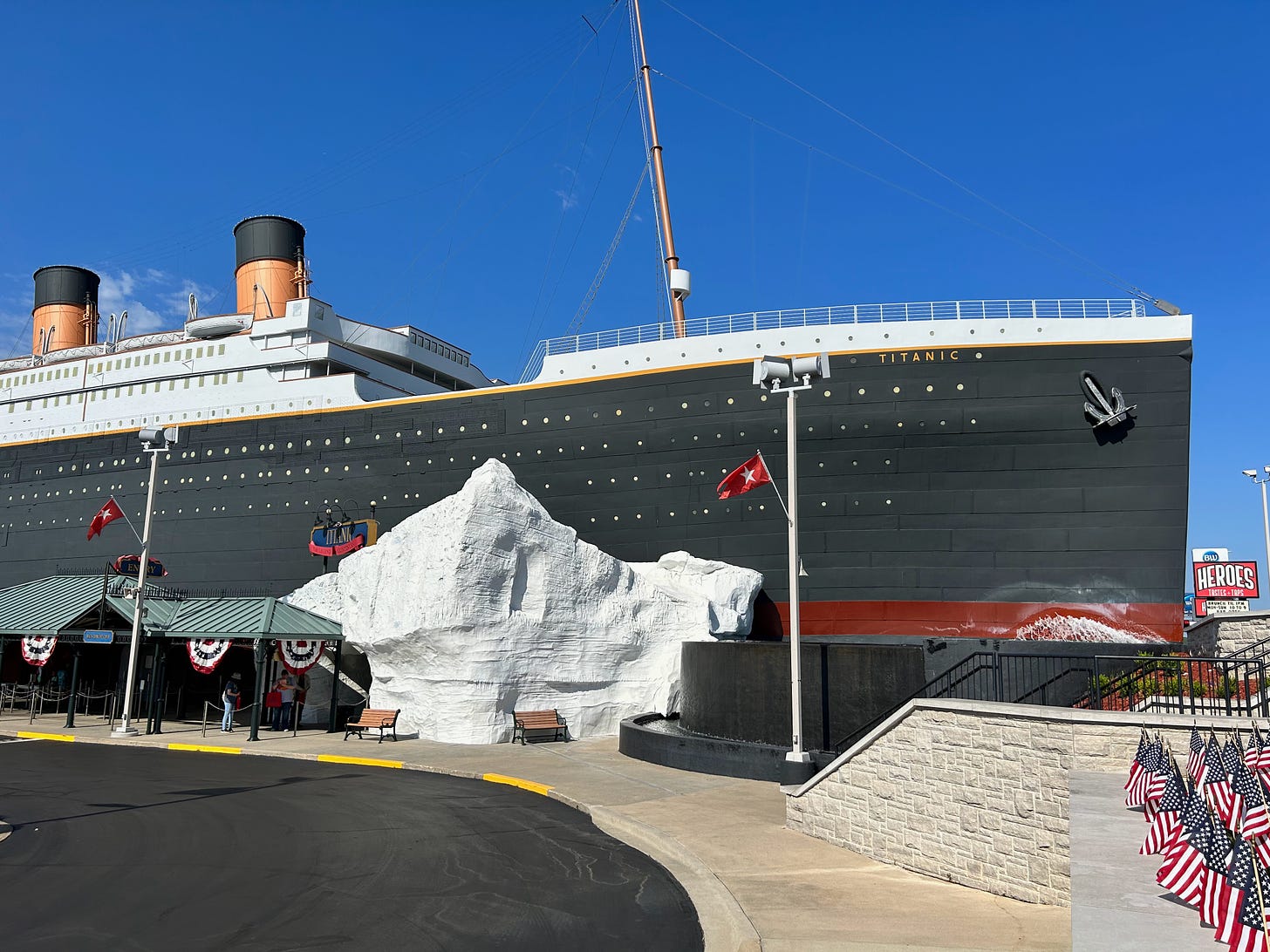Whose story will go on?
What a visit to the Titanic museum in Branson taught me about preserving immigrant stories.
Hello, readers! School starts next week, so as summer comes to an end, I want to share a trio of travel-related stories I encountered this year, starting with a visit to Branson in late June. Next week, I want to tell you about the new First Americans Museum in Oklahoma.
(Yes, I saw “Barbie,” but I need some time to process the deep grief and ancestral connection I felt, especially during that last scene, before I write about it. *insert GIF of me ugly crying*)
I hope you’re staying cool this August! And thank you, as always, for your support on Substack. I love being part of the indie journalism movement; stories like this are excellent examples of pieces I might otherwise pitch to outside publications but instead publish here, directly to you.
Until next week,
Addie
Branson is a strange little place, and not where I thought I’d get a reminder about the importance of preserving immigrant stories.
Population 13,000, this tourist hub nestled in the Missouri Ozarks draws nearly 10 million tourists a year.
Every time I visit, I feel a little bit like a local, only because my dad went to high school there, my parents met at Silver Dollar City, and my great-grandmother and great aunts and uncles lived there when I was a child growing up nearby.
So, every few years, we’ll take a nostalgia-filled trip to Branson when I visit my mom, but I’ve never found much that I felt like writing about.
But that changed this year when I went to the Titanic Museum Attraction just days after the OceanGate implosion that killed five people en route to have their own encounter with this captivating shipwreck.
As a kid growing up in the wake of Bob Ballard’s discovery of the Titanic, I don’t remember a time when I wasn’t interested in the Titanic, but I am not the kind of person who wants to see the shipwreck itself or relics pulled up from the bottom of the sea.

But this ship-shaped museum that opened 17 years ago in the heart of Route 76 doesn’t feature relics pulled up from the bottom of the sea.
Instead, and to my surprise, it showcases the stories of the passengers and the outsized ship itself through some 400 artifacts that were associated with the Titanic, from letters sent from the first leg of the maiden journey and items pulled from the surface in the days after the wreckage to photos and personal effects from survivors and their descendants.
What I was most intrigued by wasn’t the wooden deck chair — only one of seven in existence — or a cork life jacket featuring signatures of survivors, but the somber reverence the museum had for the passengers and crew who died and those who survived that day.

Unlike the “Titanic” movie, which focused mainly on the first class experience, the museum gives the second and third class passengers equal billing.
Titanic had passengers from more than 40 countries, including 118 people traveling from Sweden, which was a voyage my own ancestors made twenty years earlier. They traveled on much smaller ships but likely carried the same hopes and fears as the nearly 1,000 would-be immigrants on Titanic.
Keep reading with a 7-day free trial
Subscribe to The Feminist Kitchen to keep reading this post and get 7 days of free access to the full post archives.



